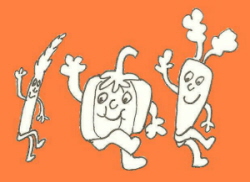Breadmaking Lesson One - The Ingredients
Yeast
Yeast is the ingredient in bread that makes it rise. It is a living organism that needs moisture, warmth and food, and in return gives off carbon dioxide. Compressed (fresh) yeast is sold from the refrigerator of health food shops in blocks. Dried yeast is sold in sachets and containers in the supermarket. Usually, half the weight of dry yeast replaces fresh - that is, 14 grams fresh yeast = 7 grams dry yeast. The packet should tell you though. Dried yeast is convenient because it can be stored for a long time.
Yeast likes the same things as us to live - air, food, water and warmth. When we make bread, we usually put it in some warm water - about body temperature. Too hot and we kill it. Too cold and it will take ages to start working. Then with a little food from flour or preferably a small amount of sugar, it will really get active. When making dough by hand you often mix the yeast with some warm water and a tiny bit of sugar to get it started at the beginning. This isn't generally necessary with a bread machine, where the yeast often goes in last to stop it working until we are ready (such as when using a delayed timer).
Flour
Flour is ground grain, usually wheat. Wheat flour contains protein, which with moisture produces gluten. Gluten is elastic and gives bread its structure. When making short bread or short crust pastry or scones, you mix the dough very little and sometimes even "rest" the dough. This is because you don't want the gluten to develop into long strands. With bread, you aim to develop the gluten, so you knead it and let it rise. This is what makes bread different from scones. As you knead bread by hand, stop and stretch it out occasionally. You will actually be able to see the gluten strands lengthening.
For bread making, a "heavy" flour or "strong" flour is best. This means it is a flour higher in gluten. Sometimes it is sold as "bread flour". For cake making, a "lighter" flour is best. This doesn't refer to the colour, but means a flour lower in gluten. If you just have regular flour and don't want to buy a separate bread flour, you can buy packets of gluten flour and just add a couple of table spoons of that when you make bread. Bread recipes using wholemeal flour almost always seem to need extra gluten flour added as wholemeal flour will always be a bit lower in gluten.
Salt
Salt adds flavour and helps the texture and the keeping qualities of the loaf. I like to use a really good sea salt, and find it is well worth adding for the flavour alone!
Sugar
Sugar helps the yeast to work. It also "enriches" the dough if you add a lot - making it more like sweet buns in texture and flavour. There is no reason you shouldn't substitute honey.
Fat
Fat improves the texture by softening the crumb and crust and improves the keeping qualities.
Liquid
Liquid adds the moisture the yeast needs to live and the dough needs to form. Milk makes a richer loaf than water. It should be boiled and then cooled until it reaches the correct temperature to kill anything that might compete with the yeast. An easier method is to mix dry milk powder in with the dry ingredients and then use water for the liquid. You can just use water without milk powder too.
That's the basic ingredients. Now, for a few extras ...
Ingredients to enrich the bread
If you want something more like a sweet bun, you can add cream, milk, eggs, sugar, sour cream, butter
Ingredients to mix in with flour
Other flours - rye, barley, soy, etc (up to about 20%)
Grains - bran, burghul (cracked wheat - soak first), millet meal, millet, linseed, rolled oats
Nuts, seeds - sunflower seeds, walnuts, sesame seeds, etc
Dried fruit
Cheese, grated or mashed vegetables | 